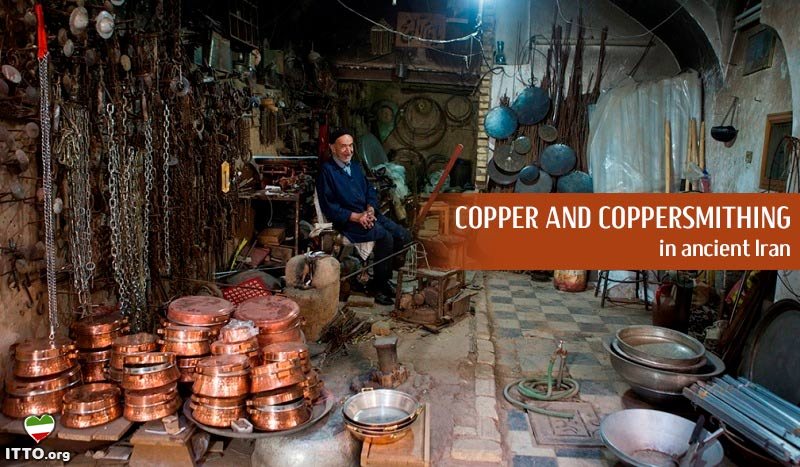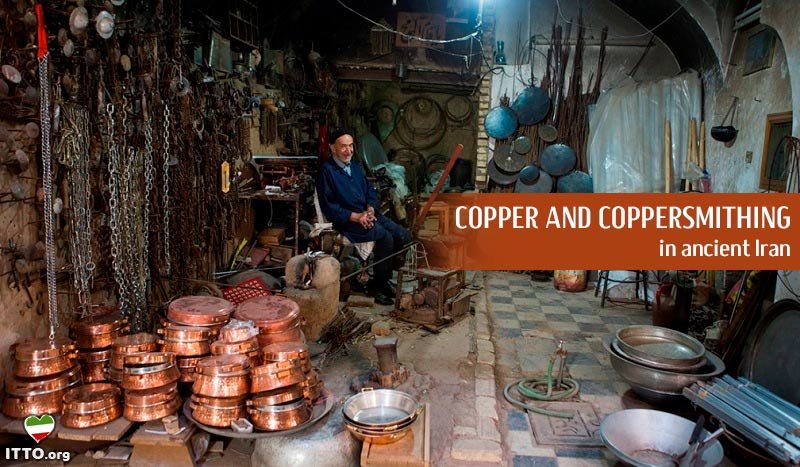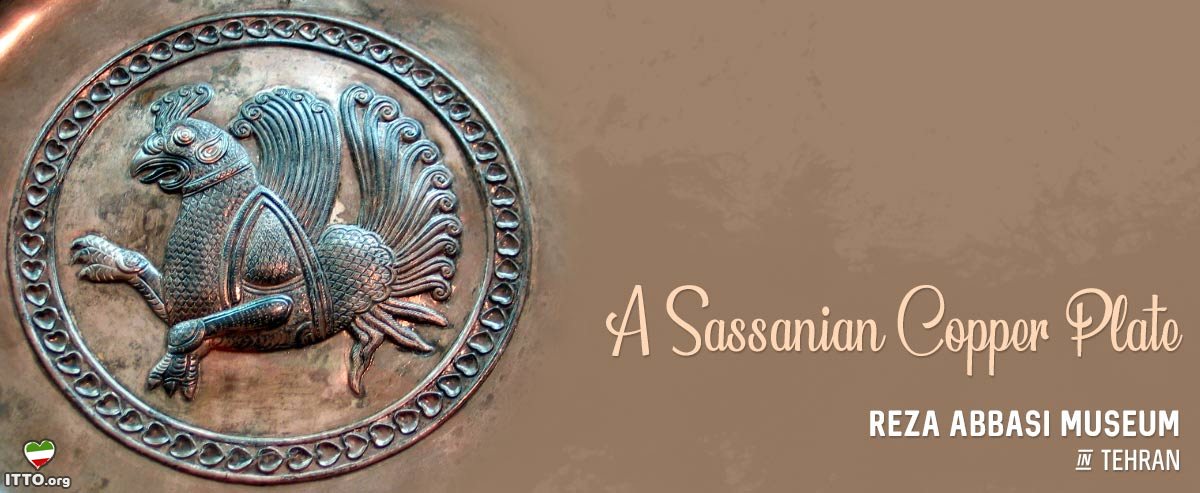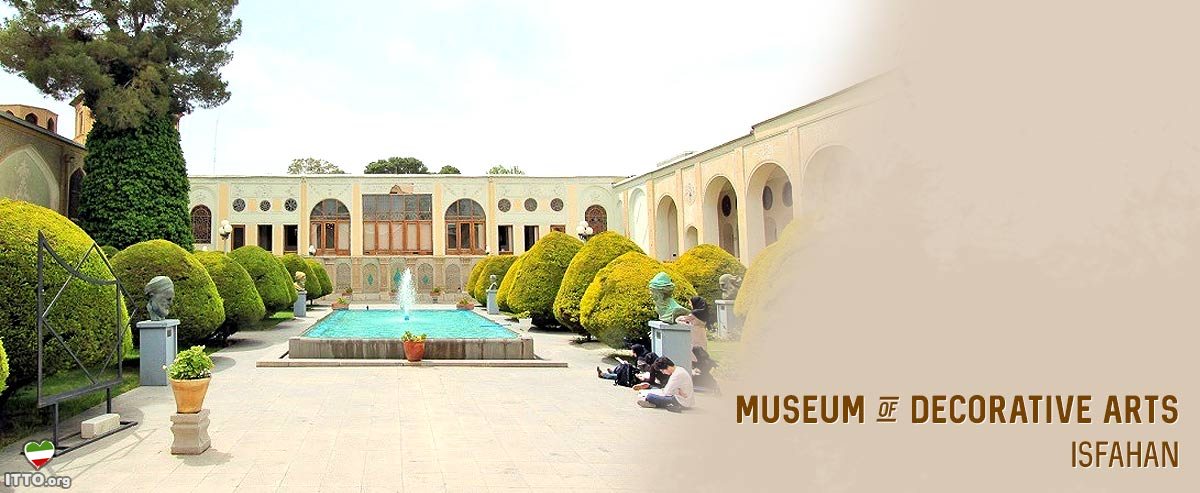History on the usage of copper is best understood when studied under the three stages of its use throughout human life namely, the Chalcolithic or Copper Age, Bronze Age, and the ancient times. And some anthropologists believe copper to be the first metal used by humans due to its softness and ease of manipulation. The archeological evidence discovered at
Sialk Hills (
Tappe Sialk) and other mining localities such as Talmesi and Anarak, and Tall-e Eblis indicates that several of the earliest sites of copper extraction were located in Iran.
According to Encyclopedia Iranica, the sites that have yielded the most ancient evidence in Iran on copper smelting are the first and second levels of excavation at
Sialk, which is undoubtedly older than Tall-e Eblis. It has been suggested that the oldest copper mine in Iran was Talmesi, which probably supplied the raw material needed for the furnaces at Sialk.
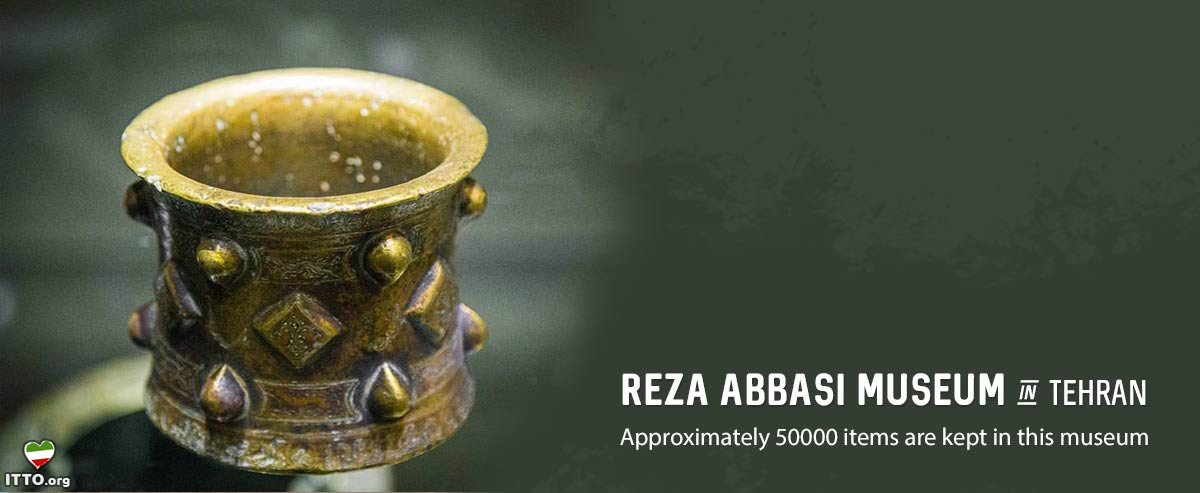
Here are the edited excerpts of the history of copper and coppersmithing in the country originally published by the illustrated encyclopedia:
During the 5th and 4th millennia BC in Iran, craftsmen were able to create enough heat to reach temperatures required for the melting of most of the then known raw materials, and thus extract metals. On top of that copper-smelting techniques became well known in various parts of Iran in this period. With the advancement of the knowledge of metallurgy in the
Achaemenid era, finely crafted copper and bronze objects were created, continuing through ancient times.
Although copper is mentioned in geographical texts much less often than precious metals, it appears to have been mined over wide areas of Persia in early Islamic times. In a travelogue inscribed by the medieval Arab traveler Abu-Dolaf, he wrote about the Neyshabur copper mine though the extent of the deposits in Iran became known only from accounts of European travelers from the
Safavid period onwards.
Sir John Chardin (1643-1713), for instance, wrote that “copper is found in
Sari,
Khorasan, and
Qazvin. However, Iranian copper is not malleable. It has to be mixed with copper from Sweden and
Japan to make it soft”. The physician and traveler Engelbert Kaempfer, who resided in Persia in the 1680s during the reign of the
Safavid Shah Solayman (r. 1666-94), wrote: “
Kerman possesses enormous resources of copper. Copper is found in
Khorasan also”.
In the arena of coppersmithing, it should be mentioned that less luxurious objects might be inlaid only with copper, but on more sumptuous pieces it was used in combination with silver and a black bituminous compound to give polychrome effects. The balanced use of copper and silver on one 12th century inkwell suggests that some metalworkers turned to such inlays as a way of transposing polychrome book illustrations into the medium of metalwork.
As metalworkers drew away from manuscript sources and evolved their own decorative traditions, copper was less favored than the more prized metal, silver, as a material for inlays.
Objects apparently made of unalloyed copper survive in very small quantities from early Islamic times. The general rarity of early Islamic copper objects is probably because they were normally purely utilitarian, beaten out of sheet copper, and left undecorated for town or
village use; they would have been melted down and reworked when old.
In the 15th century, however, decorated objects made of tinned copper became common. The reasons for this change are unclear but may have been related to the gradual dwindling of interest in inlaid base metals and the return to precious metals for luxury objects.
Also during the 17th century, Giovanni Francesco Gemelli Careri stated: “three miles from Tabriz, there exists a gold mine which is not operational because the extracted gold is not sufficient to cover the running cost of the mine. A copper mine is situated four miles from there whose produce is enormous and has huge revenues for the Royal Treasury”.
During the
Qajar period, the French ambassador Comte Julien de Rochechouart wrote: “Copper consumption is very high in Iran with no equivalents around the world. Every domestic device is made of copper. Most of the copper utensils are produced at
Kashan”. Under the Safavids, tinned copper seems to have been common throughout Persia, whence the taste spread to Mughal
India. The designs on most
Safavid tinnedcopper objects seem to have been derived from the
Timurid tradition, rather than that of the Turkman dynasties, though some are related in style to Safavid painting.
For example, a group of objects with figural decoration has been linked to western Persia in the second quarter of the 17th century. Furthermore, the products of the copper-sheet maker and the coppersmith in the 20th century, together with the techniques and terminology associated with these trades, have been studied by Hans Wulff and Sigrid Westphal-Hellbusch, and Ilse Bruns.
